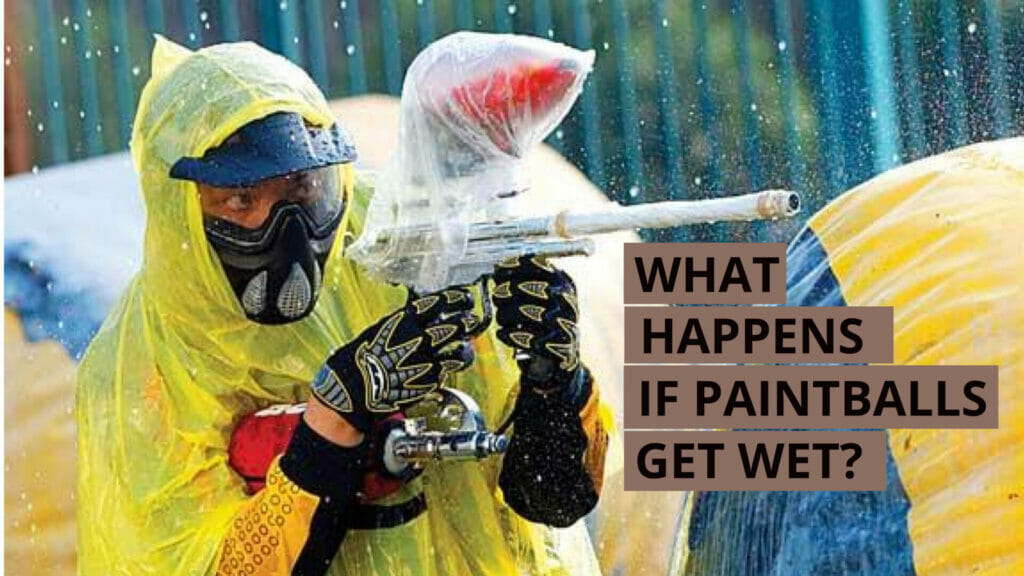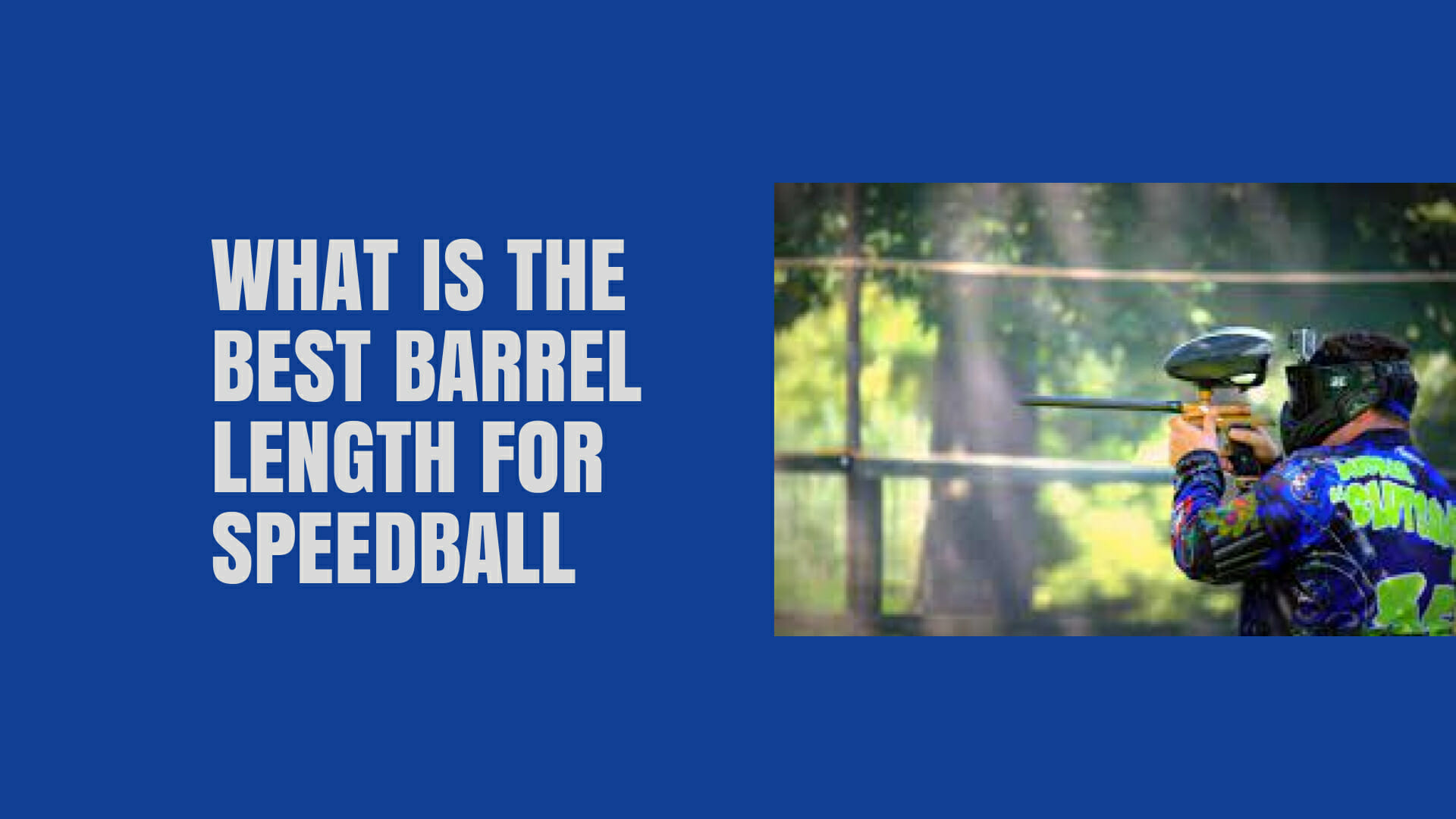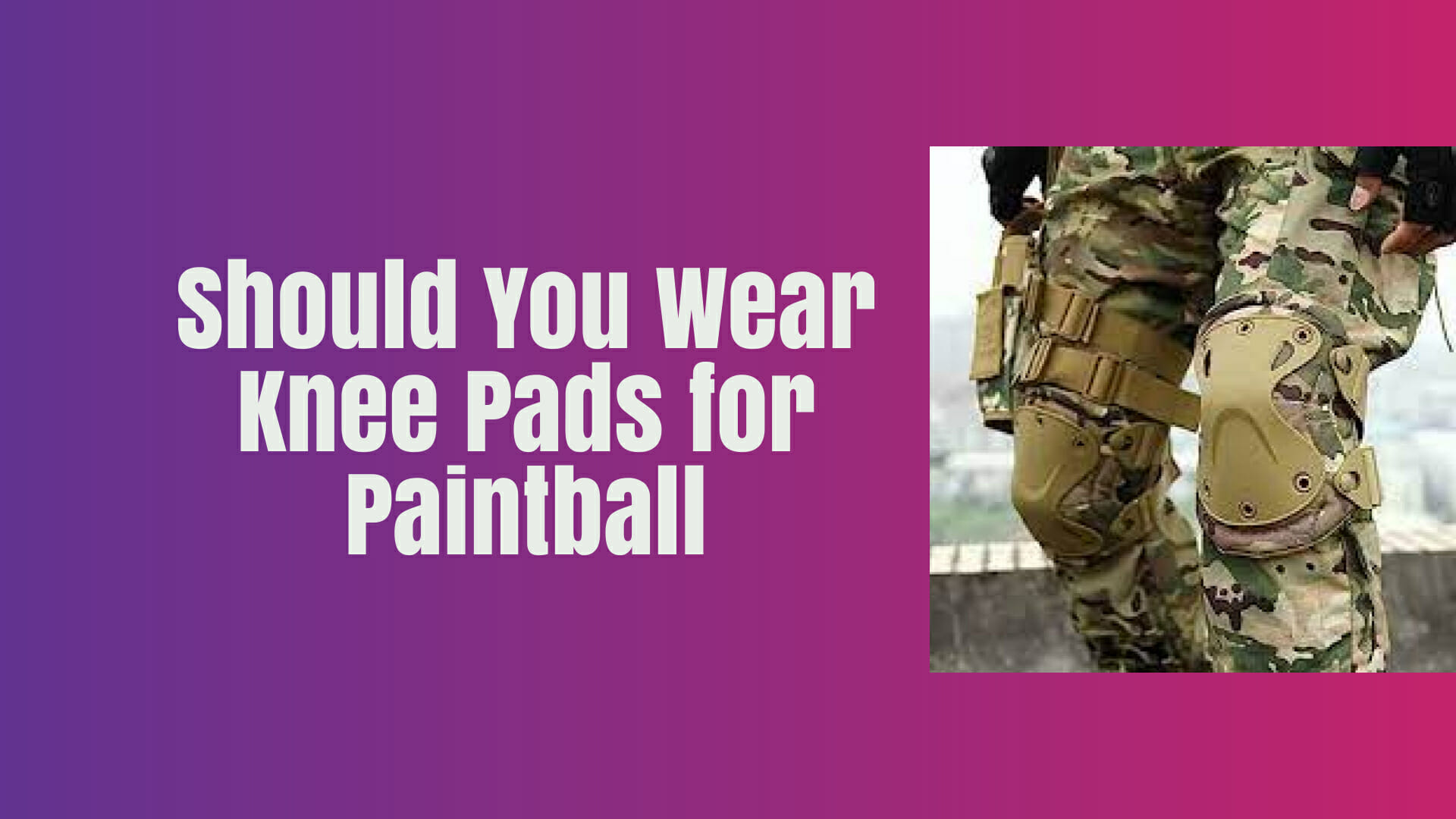Picture this – you and your friends are getting ready for an epic paintball battle. You’ve got your gear on, and your paintball gun loaded, and you’re about to dive headfirst into the action. But wait…what happens if paintballs get wet? Can they still be used? Well, fear not, because we’re here to answer that question and more.
When it comes to paintballs and water, things can get a little tricky. You see, paintballs are made up of a gelatin shell filled with non-toxic paint. This shell is designed to break upon impact, leaving a colorful mark on your opponents. But what happens when that shell gets wet?
Here’s the deal – if paintballs get wet, they can become softer and more prone to breaking prematurely. This means that they might not have the same accuracy or range when fired from your paintball gun. So, while you can still technically use wet paintballs, they may not perform as well as their dry counterparts. But don’t worry, we’ve got some tips and tricks up our sleeves to help you make the most of your soggy situation. So, let’s dive in and find out how to handle wet paintballs like a pro!

Key Takeaways – What Happens If Paintballs Get Wet
- When paintballs get wet, they can become less accurate during gameplay.
- Moisture can cause the paintball shell to swell, leading to barrel obstructions and potential gun damage.
- Wet paintballs are more prone to breaking inside the gun, causing jams and malfunctions.
- Humidity and water exposure can affect the paintball’s fill, making it less vibrant and prone to staining clothes.
- To prevent paintballs from getting wet, store them in a cool and dry place, away from moisture.
Comparing What happens if paintballs get wet
Paintball is a popular recreational activity that involves shooting paint-filled capsules, known as paintballs, at opponents. But have you ever wondered what happens if paintballs get wet? In this article, we will explore the effects of water on paintballs and compare the outcomes for different types of paintballs. Whether you’re a paintball enthusiast or simply curious about the science behind paintball, read on to discover the fascinating world of wet paintballs.
Overview of “Regular” Paintballs
Regular paintballs are the traditional type of paintballs used in most paintball games. These paintballs are made from a gelatin shell that encapsulates a liquid fill, which usually consists of a mixture of water-soluble dye and a non-toxic, water-based solution. When a regular paintball is shot, the shell breaks upon impact, releasing the liquid fill and leaving a mark on the target.
Regular paintballs are designed to withstand typical weather conditions and occasional exposure to moisture. Although they may become slightly softer when exposed to humidity or rain, they generally maintain their integrity and perform as intended. However, if regular paintballs are submerged in water for an extended period of time, their gelatin shells may dissolve, causing the liquid fill to leak out and rendering them unusable.
Therefore, it is important to keep regular paintballs dry and store them in a cool, dry place to maximize their shelf life and ensure optimal performance during gameplay.
Overview of “Waterproof” Paintballs
Waterproof paintballs, as the name suggests, are specially designed to resist water and remain intact even when submerged. These paintballs feature a modified gelatin shell that has been treated and reinforced to repel water. The waterproof coating helps to protect the liquid fill and maintain the structural integrity of the paintball in wet conditions.
Waterproof paintballs are ideal for scenarios where players anticipate exposure to water, such as playing in rainy weather or in aquatic paintball fields. The waterproof coating prevents the paintballs from becoming waterlogged or breaking prematurely, ensuring consistent performance throughout the game.
However, it is important to note that waterproof paintballs may still experience some changes in performance when exposed to water. The impact force may be slightly reduced, and the trajectory may be affected due to the altered viscosity of the liquid fill. Nevertheless, waterproof paintballs are a reliable choice for players who want to minimize the impact of water on their gameplay.
Key Features Compared: Wet Performance
Impact Resistance
When it comes to impact resistance, regular paintballs may be more susceptible to water-related damage compared to waterproof paintballs. The gelatin shell of regular paintballs can become soft and fragile when wet, making them more prone to breaking upon impact. On the other hand, waterproof paintballs are designed to maintain their structural integrity even when exposed to water, reducing the risk of premature breaks.
Regular paintballs: They may break prematurely when wet, reducing their effectiveness in gameplay.
Waterproof paintballs: They are more resistant to moisture-induced breaks and maintain their performance even in wet conditions.
Fill Leakage
When regular paintballs get wet, the gelatin shell can dissolve, causing the liquid fill to leak out. This not only renders the paintball unusable but also creates a mess that may require additional cleaning. In contrast, the waterproof coating on waterproof paintballs helps to prevent fill leakage and minimize the mess associated with wet paintballs.
Regular paintballs: They are prone to fill leakage when wet, leading to a loss of paint and additional cleanup.
Waterproof paintballs: The waterproof coating reduces the risk of fill leakage, resulting in less paint loss and easier cleanup.
Performance Consistency
Regular paintballs may experience a decrease in performance when exposed to water. The softened gelatin shell and altered viscosity of the liquid fill can affect the trajectory and accuracy of regular paintballs, leading to less predictable shots. On the other hand, waterproof paintballs are specifically designed to maintain consistent performance in wet conditions, providing players with reliable and accurate shots.
Regular paintballs: Their performance may be compromised when wet, resulting in less predictable shots.
Waterproof paintballs: They offer consistent performance in wet conditions, ensuring accurate shots.
User Experience
The user experience with wet paintballs can vary depending on the type of paintball used. For players using regular paintballs, the impact of water can be frustrating as it can lead to breakage, fill leakage, and compromised performance. Wet regular paintballs may not mark opponents effectively, affecting the outcome of the game and the overall satisfaction of players.
On the other hand, players using waterproof paintballs can enjoy a more consistent and reliable user experience. The waterproof coating minimizes the negative effects of moisture, allowing players to focus on the game without worrying about the performance of their paintballs.
Overall, the user experience with wet paintballs is significantly better when using waterproof paintballs, as they offer greater durability, reduced mess, and consistent performance even in wet conditions.
Pros and Cons
Regular Paintballs
Pros:
- Economical option
- Widely available
- Suitable for dry conditions
Cons:
- Prone to breakage when wet
- Fill leakage when wet
- Performance may be compromised when wet
Waterproof Paintballs
Pros:
- More resistant to breaks when wet
- Reduced risk of fill leakage
- Consistent performance in wet conditions
Cons:
- Higher cost compared to regular paintballs
- May experience slight changes in trajectory and impact force
- May not be as widely available
Price Comparison
In terms of price, regular paintballs are generally more affordable compared to waterproof paintballs. The waterproof coating and enhanced durability of waterproof paintballs come at a higher cost, reflecting the added technology and materials used in their production.
Regular paintballs are widely available and can be purchased in bulk at a lower price per paintball. On the other hand, waterproof paintballs may be less readily available and often come at a premium price due to their specialized features.
Ultimately, the price comparison between regular paintballs and waterproof paintballs will depend on the specific brands, quantities, and retailers. It is advisable to consider your budget and playing conditions when choosing between the two options.
Comparison Table: Wet Performance
| Feature | Regular Paintballs | Waterproof Paintballs |
|---|---|---|
| Impact Resistance | May break prematurely when wet | More resistant to moisture-induced breaks |
| Fill Leakage | Prone to fill leakage when wet | Reduced risk of fill leakage |
| Performance Consistency | Performance may be compromised when wet | Consistent performance in wet conditions |
Final Decision: Which is better?
After comparing the wet performance, user experience, pros and cons, and price of regular paintballs and waterproof paintballs, the better choice ultimately depends on your specific needs and preferences.
If you typically play in dry conditions and are looking for an economical option, regular paintballs may be suitable for you. They are widely available, affordable, and perform well in dry weather.
However, if you anticipate playing in wet conditions or want added durability and consistent performance, waterproof paintballs are the better choice. Despite their higher price, they offer several advantages such as increased resistance to breaks, reduced fill leakage, and consistent performance even in wet conditions.
In conclusion, for players seeking a reliable and consistent paintball experience, especially in wet conditions, waterproof paintballs are the recommended choice. They provide peace of mind, improved durability, and consistent performance, ensuring an enjoyable and successful paintball game.
Three reasons to choose waterproof paintballs:
- Enhanced durability in wet conditions
- Reduced risk of fill leakage
- Consistent performance even when exposed to water
Frequently Asked Questions
Curious about what happens if paintballs get wet? You’ve come to the right place! We’ve got answers to your burning questions.
Can you use wet paintballs in a game?
It’s not recommended to use wet paintballs in a game. When paintballs get wet, they can lose their shape and become misshapen or swollen. This can affect their flight trajectory and accuracy, making them unpredictable during gameplay. Additionally, wet paintballs can be more prone to break before they even hit their target, leading to a messy and unsatisfying experience. To ensure the best performance and avoid any issues, it’s best to use dry paintballs during your games.
However, if your paintballs do get wet, don’t fret! You can try drying them off thoroughly before using them. Make sure to remove any excess moisture and store them in a dry and cool place. Just remember that even after drying, their performance may not be as reliable as fresh, dry paintballs.
How does water affect paintballs?
Water can have several effects on paintballs. When paintballs get wet, the water can seep through their shell, causing them to swell and potentially break prematurely. The moisture can also dilute the paint inside the paintball, making it less vibrant and reducing its visibility on impact. This can make it harder for players to determine if a paintball has hit its target and can lead to disputes during gameplay.
Furthermore, water can impact the consistency of the fill inside a paintball. If too much water enters the fill, it can affect the thickness and viscosity of the paint, potentially affecting its splatter upon impact. This may make it more difficult to leave visible marks on opponents or objects, detracting from the excitement and visual feedback of the game. It’s always better to keep your paintballs dry to ensure optimal performance and avoid these potential issues.
How can I prevent my paintballs from getting wet?
The best way to prevent your paintballs from getting wet is to store them properly. Make sure to keep them in airtight containers or sealed bags to protect them from moisture. You should also store them in a cool, dry place, away from direct sunlight and extreme temperature variations, as these factors can also affect the quality of the paintballs.
If you’re playing in wet or rainy conditions, consider using a waterproof paintball container or a waterproof bag to keep your paintballs dry during gameplay. Additionally, try to avoid leaving paintballs exposed to rain or damp environments for extended periods. Taking these precautions will help keep your paintballs in optimal condition for your next game.
What should I do if my paintballs accidentally get wet?
If your paintballs accidentally get wet, don’t panic! Start by carefully wiping them dry with a clean towel or cloth. Remove any excess moisture from the surface of the paintballs. Avoid using heat sources like hairdryers or heaters, as excessive heat can damage the paintballs.
Once you’ve dried them off as best you can, let the paintballs air dry in a well-ventilated area. It’s crucial to ensure they are completely dry before using them to avoid any potential issues during gameplay. Finally, store them in a dry and cool place to prevent any future moisture exposure. Remember, while drying can improve their usability, they may not perform as reliably as fresh, dry paintballs, so keep that in mind during your next game.
Are there any special precautions for storing wet paintballs?
If your paintballs are wet and you’re storing them, there are a few precautions you should take to prevent further issues. Firstly, make sure to dry them off as much as possible using a clean towel, removing any excess moisture. If you have access to compressed air (like from an air compressor), you can gently blow-dry the paintballs to aid in the drying process.
Once they are dry to the touch, place the paintballs in a breathable container or bag, such as a mesh bag or a container with holes, to allow any remaining moisture to evaporate. It’s crucial to avoid sealing the paintballs in an airtight container while they are wet or damp, as this can lead to mold or mildew growth. Check the paintballs periodically to ensure they are completely dry before returning them to a proper storage container.
How to clean paintballs – BKI Dirty Paint Trick from Dynasty
Summary
So, now you know what happens if paintballs get wet! We learned that when paintballs get wet, they can become less accurate and less effective. The moisture can cause the paintballs to swell up, making them harder to shoot straight. It can also make the outer shell softer, causing it to break more easily on impact.
One important thing to remember is that playing with wet paintballs is not recommended. It’s best to keep them dry to maintain their quality and performance. If you find yourself in a situation where your paintballs get wet, make sure to dry them properly before using them again.
By understanding how moisture affects paintballs, you can prepare yourself for different weather conditions and take measures to keep your paintballs in the best shape possible. This way, you can have a more enjoyable and successful paintball experience. Keep these tips in mind and have a blast on the battlefield!



